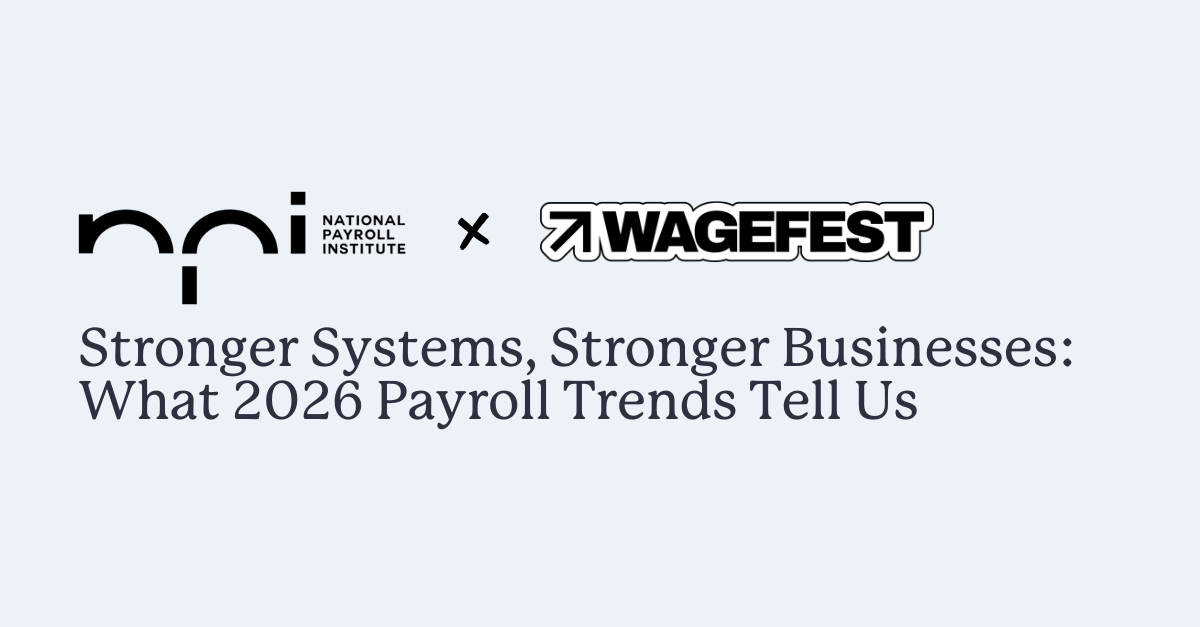Become an insider!
Get our latest payroll and small business articles sent straight to your inbox.
Payroll is often seen as an add-on service for bookkeepers and accountants, secondary to their core work. However, it can be a powerful service for growing your business, especially when serving small businesses.
After all, small businesses make up 46.8% of private sector employment in Canada — that’s over 5.7 million people relying on payroll. As these businesses grow, so does their need for payroll expertise. By discussing payroll with client leads or during client reviews, you can identify potential knowledge gaps, showcase your expertise, and position yourself as a key partner who will grow alongside their business.
The right clients make all the difference
More clients don’t always mean more profit. The wrong clients can feel like teaching a cat to fetch. Sure, you might get some exercise, but it’s mostly just chaos, patience, and avoiding injury. Instead, focus on attracting A&B-list clients — those who understand your value, respect your expertise, and create a true partnership.
So, what are some of the risks of working with wrong clients?
Missed deadlines: Disorganized clients can disrupt payroll schedules, causing stress for employees and headaches for you.
Loss of billable time: Constant revisions and miscommunications drain your billable hours, affecting profitability.
Price pushback: Leading to uncomfortable negotiations.
Security risks: Poor client data management can put both their business, and yours at risk.
The takeaway? No matter the service you provide, it’s not about the quantity of clients, it’s about the quality! Let’s focus on attracting those A&B-list clients who truly value your payroll expertise.
How to attract A&B-list clients with payroll services
Attracting the right clients isn’t just about filling your roster — it’s about building a business that runs smoothly, profitably, and with less stress. So, how do you ensure you’re working with businesses that truly benefit from your payroll and bookkeeping services? Here’s a checklist to help you attract and retain A&B-list clients — the ones who make your work rewarding and your accounting firm or bookkeeping business thrive.
1. Define your Ideal Client Profile (ICP)
A big part of dodging wrong-fit clients is by understanding the kind of client you do want to work with. A well-designed ICP helps you more easily spot the right kind of client and can even help a prospective client more readily identify you as a good fit to work with, too. Ask yourself:
Do I want to specialize in certain industries?
The small business landscape is vast. Considering niche markets or narrowing your focus to industries that match your skills and experience will help you work more efficiently and deliver greater value.
What size of business is the best fit?
Are you more suited for sole proprietors, startups, or larger small businesses? The size of business you work with will impact everything from your bandwidth to payroll complexity and stakeholder dynamics.
Do I want to be involved in strategic business decisions?
Would you prefer a seat at the table (or zoom call), sharing insights on payroll key performance indicators (KPIs) to help shape your client’s financial planning and business strategy? Or do you feel more comfortable working behind the scenes, supporting an accountant who takes the lead on advisory roles?
Which clients will benefit most from my services?
Consider the types of clients that would gain the most value from your professional services. Think about their growth stage, growth forecast, location(s), tech-savviness, and how involved the client wants to be in the process.
Do shared values matter?
Building relationships with clients who share your values leads to deeper, more meaningful connections. This alignment can also extend to shared priorities like diversity and inclusion or environmental responsibility, further strengthening the relationship.
By refining your ICP, you’ll stop casting a wide net and start attracting clients who truly fit your business.
2. Highlight your unique value
Small business owners want a partner who can help them navigate the complexities of their financial landscape, provide insights that drive decisions, and ultimately save them time and money.
Highlighting your unique selling points, such as using integrated accounting, payroll, and time management solutions, and sharing case studies, like how your payroll expertise helped clients avoid penalties, secure loans, and improve cash flow, will help you stand out in today’s competitive landscape.
Here’s how to stand out:
Fill knowledge gaps
Position yourself as a trusted payroll professional by educating clients on key areas like payroll compliance, tax regulations, and industry best practices. Instead of assuming they understand all the nuances, help them recognize where they need guidance and offer clear solutions. Highlight how staying on top of the latest laws and changes can protect their business and save them from costly errors, building trust and showcasing your expertise in navigating the complexities of payroll and regulations.
Demonstrate continuous learning
In the constantly evolving world of payroll compliance and tax regulations, staying informed sets you apart. Showcase your commitment to professional development — whether through certifications, workshops, conferences and industry events, or staying up to date on legislative and industry changes. This not only ensures your clients receive accurate, current advice but also reinforces your proactive approach to safeguarding their business from potential risks. By demonstrating your dedication to continuous learning, you establish yourself as a trusted, forward-thinking expert who delivers value through expertise and insight.
Use technology to save time and optimize processes
A tech-forward approach can significantly streamline your workflow. Cloud-based systems streamline record-keeping, invoicing, and payroll processing while enabling seamless document sharing and access — eliminating time wasted searching for information. Choosing the right bookkeeping app stack to use is key to process optimization. Automation tools reduce manual data entry errors, improve consistency, and ensure that deadlines are met without last-minute scrambling. Real-time collaboration allows you to provide timely updates, while also enhancing data security with encryption, multi-factor authentication, and secure document portals, ensuring sensitive information is handled properly.
Leverage content marketing
Effectively communicating your value requires a strategic approach to marketing. Use content marketing — through blog posts, newsletters, email marketing, your website, and webinars — to educate your target audience on payroll best practices and industry updates. Strengthen your online presence by engaging on social media platforms and in professional networks, positioning yourself as a thought leader. By consistently sharing valuable content and insights you establish credibility and attract potential clients seeking payroll expertise in a competitive market.
3. Build strategic partnerships
Collaborating with reputable professional associations and organizations is a powerful way to enhance your credibility. Highlighting your accreditations, certifications, and commitment to compliant practices reinforces your role as a trusted payroll professional. For example, joining The National Payroll Institute or pursuing a Certified Payroll Compliance Professional (PCP) designation can go a long way in assuring your accounting or bookkeeping clients that they’re in capable hands.
Additionally, partnering with vendors — such as a payroll software dedicated to supporting accountants and bookkeepers — can strengthen client relationships while helping you grow your business. Strategic partnerships like these not only build trust but also set you and your clients up for long-term success.
Quality over quantity: build a profitable client base
By defining your ICP, highlighting your unique value, streamlining processes, showcasing tech expertise, and building trust through partnerships — you can attract small business clients who align with your business goals and values. This approach not only boosts your profitability but also ensures a more fulfilling and ideally stress-free work life.
So, let’s stop casting that wide net and start reeling in those ideal clients who truly appreciate your skills, where you are both working towards bottom lines.
For more insider insights on attracting new businesses, streamlining new client onboarding, and pricing out packages, I recommend reading The Bookkeeper’s Playbook to Making Payroll Profitable. This free playbook was created by interviewing bookkeepers across Canada to get their firsthand advice and expertise on making payroll a profitable part of your bookkeeping services.











